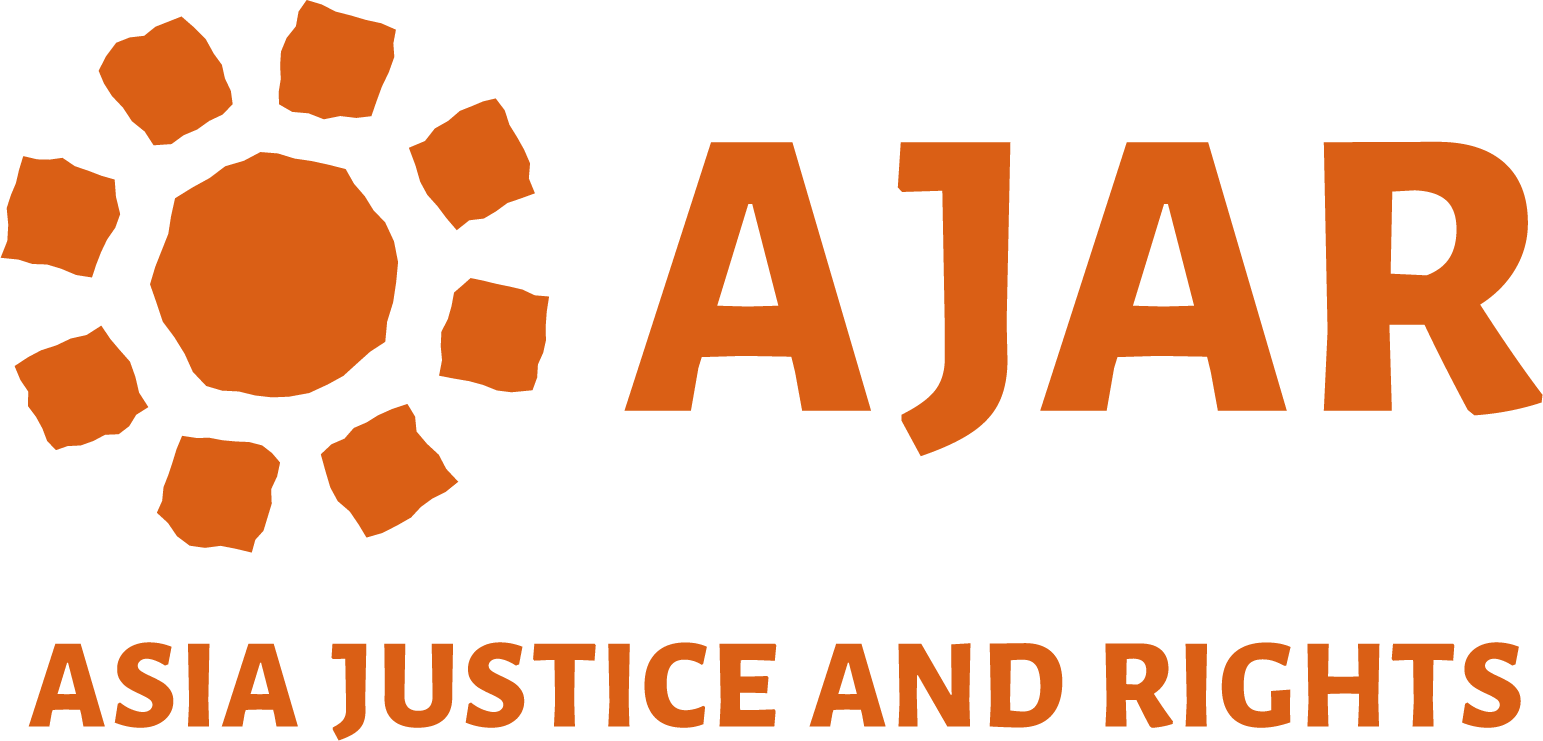International criminal law allows for individuals to be held criminally responsible not only for committing genocide, crimes against humanity, and war crimes, but also for attempting, facilitating, or aiding and abetting the commission of such crimes.
အပြည်ပြည်ဆိုင်ရာရာဇဝတ်မှုဥပဒေက လူပုဂ္ဂိုလ်တစ်ဦးချင်းစီ၏ လူမျိုးတုံးသတ်ဖြတ်မှုများ၊ လူသားများအပေါ်ကျူးလွန်သော ရာဇဝတ်မှုများနှင့် စစ်ရာဇဝတ်မှုများကို ချိုးဖောက်ကျူးလွန်ခြင်းအတွက်သာမက ထိုရာဇဝတ်မှုများ ဖြစ်ပွားစေရန်အတွက် ကြိုးပမ်းခြင်း၊ စီစဉ်ဆောင်ရွက်ခြင်း သို့မဟုတ် ကူညီခြင်းနှင့် အားပေးခြင်းတို့အတွက် ရာဇဝတ်မှုဆိုင်ရာအရ တာဝန်ခံ၊ တာဝန်ယူစေပါသည်။
Individuals may also be held criminally responsible for planning and instigating the commission of such crimes.
လူပုဂ္ဂိုလ်တစ်ဦးချင်းကိုလည်း ထိုရာဇဝတ်မှုများ ကျူးလွန်ရန် ကြံစည်စီစဉ်ခြင်းနှင့် သွေးထိုးလှုံ့ဆောင်ခြင်းများ ကျူးလွန်ခြင်းအတွက်လည်း ရာဇဝတ်မှုကြောင်းအရလည်း တာဝန်ခံစေနိုင်ပါသည်။
Article 25 of the ICC Statute now regulates individual criminal responsibility in detail. Article 25(1) provides that the Court shall have jurisdiction over natural persons, not over states or organizations. Paragraph 2 of Article 25 reiterates the principle of individual criminal responsibility.
ယခုအခါ ICC စာချုပ် (ဥပဒေ) ၏ ပုဒ်မ ၂၅ တွင် လူတစ်ဦးချင်းစီ၏ ရာဇ၀တ်မှုဆိုင်ရာ တာဝန်ရှိမှုကို အသေးစိတ် ရေးသားဖော်ပြထိန်းသိမ်းထားသည်။ ပုဒ်မ ၂၅ (၁) တွင် တရားရုံးသည် နိုင်ငံများ သို့မဟုတ် အဖွဲ့အစည်းများအပေါ် မဟုတ်ဘဲ လူပုဂ္ဂိုလ်များအပေါ် စီရင်ပိုင်ခွင့်အာဏာရှိစေရမည်ဟု ပြဌာန်းထားသည်။ ပုဒ်မ ၂၅ ၏ စာပိုဒ် ၂ တွင် လူတစ်ဦးချင်းစီ၏ ရာဇ၀တ်မှုဆိုင်ရာ တာဝန်ရှိမှု အခြေခံသဘောတရားကို ထပ်လောင်းဖော်ပြထားသည်။
Paragraph 3 of the provision distinguishes various modes of individual responsibility.
ပြဋ္ဌာန်းချက်၏ အပိုဒ် ၃ သည် တစ်ဦးချင်းတာဝန်ရှိမှု ပုံစံအမျိုးမျိုးကို ခွဲခြားဖော်ပြထားသည်။
While Article 25(3)(a) to (d) addresses modes of criminal participation, subparagraphs (e) and (f) deal with incitement to genocide and with attempt and abandonment; this might be seen as misleading from a structural point of view, because neither incitement to genocide nor attempt can be classified as modes of participation, but should rather be classified as inchoate crimes.
ပုဒ်မ ၂၅(၃) (က) မှ (ဃ) သည် ရာဇ၀တ်မှုတွင် ပါဝင်သည့်ပုံစံများကို ဖော်ပြထားပြီး၊ အပိုဒ်ခွဲ (င) နှင့် (စ) တို့သည် လူမျိုးတုန်းသတ်ဖြတ်ရန် လှုံ့ဆော်မှု၊ ကြိုးပမ်းမှုနှင့် စွန့်ပစ်မှုတို့အကြောင်းဖော်ပြသည်။ ထိုအချက်ကို ဖွဲ့စည်းမှုဆိုင်ရာ ရှုထောင့်မှ လမ်းလွဲမှုအဖြစ် ရှုမြင်နိုင်သည်၊ အဘယ်ကြောင့်ဆိုသော် လူမျိုးတုံးသတ်ဖြတ်မှုကို လှုံ့ဆော်မှု သို့မဟုတ် ကြိုးပမ်းမှုအား ပါဝင်မှုပုံစံများအဖြစ် မသတ်မှတ်နိုင်သောကြောင့် ရုပ်လုံးမပေါ်သေးသည့် ရာဇ၀တ်မှုအဖြစ် သတ်မှတ်သင့်သည်။
Article 25(4) of the ICC Statute rules that provisions on individual criminal responsibility do not affect the responsibility of states under international criminal law. Section 3(a)^(d) is certainly the core of Article 25. Commission, ordering, instigating and aiding and abetting are confirmed as modes of participation. The same holds true for joint commission, although this form was never explicitly mentioned in former statutes or conventions.
ICC စာချုပ် (ဥပဒေ) ၏ ပုဒ်မ ၂၅ (၄) တွင် လူပုဂ္ဂိုလ်တစ်ဦးချင်းစီ၏ ရာဇဝတ်မှုဆိုင်ရာ တာဝန်ရှိမှုသည် အပြည်ပြည်ဆိုင်ရာ ရာဇ၀တ်မှုဥပဒေအရ နိုင်ငံများ၏ တာဝန်ဝတ္တရားများကို အကျိုးသက်ရောက်မှု မရှိစေရန် ချမှတ်ထားသည်။ အပိုင်း ၃(က) (ဃ) သည် ပုဒ်မ ၂၅ ၏ အဓိကအချက်ဖြစ်ပါသည်။ ကျူးလွန်ခြင်း၊ အမိန့်ပေးခြင်း၊ သွေးထိုးလှုံ့ဆော်ခြင်းနှင့် ကူညီဆောင်ရွက်ပေးခြင်းနှင့် အားပေးအားမြောက်ပြုခြင်းများကို ပါဝင်ပါသက်မှုပုံစံများအဖြစ် အတည်ပြုပါသည်။ ပူးပေါင်းကျူးလွန်ခြင်းနှင့်ပတ်သက်၍ ယခင်ဥပဒေများ သို့မဟုတ် သဘောတူညီချက်များတွင် အတိအလင်းဖော်ပြထားခြင်းမရှိသော်လည်း ပူးပေါင်းကျူးလွန်ခြင်းအတွက်လည်း အလားတူပင်ဖြစ်သည်။
In addition, the ICC Statute also includes the concept of perpetration-by-means and contributions to a group crime. Section 3(a)^(d) affirms existing modes of participation in international criminal law, while cautiously rephrasing and supplementing them. However, the most important difference between prior legal frameworks and Article 25(3) ICC Statute lies not in the redefinition of the scope of individual responsibility but in systematizing modes of participation.
ထို့အပြင် ICC စာချုပ် (ဥပဒေ) တွင် အုပ်စုဖွဲ့ရာဇ၀တ်မှုတစ်ခုအား ကျူးလွန်ခြင်းနှင့် ပံ့ပိုးမှုများနှင့် ပတ်သက်သည့် အယူအဆသဘောတရားများလည်း ပါဝင်သည်။ အပိုင်း ၃(က)(ဃ) သည် နိုင်ငံတကာ ရာဇ၀တ်မှုဆိုင်ရာ ဥပဒေတွင် လက်ရှိပါဝင်မှုပုံစံများကို အတည်ပြုထားပြီး ၎င်းတို့ကို သတိကြီးကြီးထားပြီး အခြားစကားလုံးများဖြင့် ရေးသားခြင်းနှင့် ဖြည့်စွက်ခြင်းများ ပြုလုပ်ထားသည်။ သို့ရာတွင်၊ ယခင်ရှိပြီးသော ဥပဒေမူဘောင်များနှင့် ICC စာချုပ် (ဥပဒေ) အပိုဒ် ၂၅(၃) အကြား အရေးအကြီးဆုံး ကွာခြားချက်မှာ လူတစ်ဦးချင်း၏ တာဝန်ရှိမှုအတိုင်းအတာကို ပြန်လည်အဓိပ္ပါယ်ဖွင့်ဆိုချက် မဟုတ်ဘဲ ပါဝင်ပတ်သက်မှုပုံစံများကို စနစ်တကျသတ်မှတ်ခြင်းပင် ဖြစ်သည်။
Unlike the statutes of the ad hoc Tribunals, Article 25(3) ICC Statute does not simply enumerate the different modes of participation, but also classifies them. It distinguishes four levels of criminal responsibility: first, the commission of a crime; second, ordering and instigating; third, assistance and fourth, contribution to a group crime. At the same time, the wording of the provision clearly reflects the difference between commission, as liability for the crime as the result of one’s own conduct, and all the other modes of participation, as accessory liability for a crime committed by someone else. For in accordance with the case law of the ad hoc Tribunals, ordering, instigating, assistance and contribution to group crimes all require that the crime itself has in fact been committed, or at least attempted.
အထူးခုံရုံးများ၏ ဥပဒေများနှင့်မတူဘဲ၊ ICC စာချုပ် (ဥပဒေ) ၏ အပိုဒ် ၂၅ (၃) သည် အမျိုးမျိုးသော ပါဝင်ပတ်သက်မှုပုံစံများကို တစ်ခုချင်းဖော်ပြထားသည်သာမက ၎င်းတို့ကို အမျိုးအစားခွဲခြားထားသည်။ ၎င်းသည် ရာဇ၀တ်မှုဆိုင်ရာ တာဝန်ရှိမှုကို အဆင့် ၄ ဆင့်ဖြင့် ခွဲခြားထားပါသည်- ပထမအဆင့်အားဖြင့် ရာဇ၀တ်မှုကို ကျူးလွန်ခြင်း၊ ဒုတိယအဆင့်အားဖြင့် အမိန့်ပေးခြင်းနှင့် သွေးထိုးလှုံ့ဆော်ခြင်း၊ တတိယအဆင့်အားဖြင့် အကူအညီပေးခြင်းနှင့် စတုတ္ထအဆင့်အားဖြင့် အုပ်စုဖွဲ့ရာဇ၀တ်မှုများအတွက် ပံ့ပိုးကူညီခြင်းတို့ ဖြစ်သည်။ တစ်ချိန်တည်းမှာပင်၊ ပြဋ္ဌာန်းချက်၏အသုံးအနှုန်းသည် ကျူးလွန်ခြင်းဖြစ်သည့် တစ်ဦးတစ်ယောက်ချင်းစီသည် ၎င်းတို့၏လုပ်ဆောင်မှုအရ တာဝန်ရှိခြင်းနှင့် အခြားပါဝင်ပတ်သက်သည့် ပုံစံဖြစ်သည့် အခြားသူတစ်ဦးက ကျူးလွန်သော ရာဇဝတ်မှုတစ်ခုအတွက် အလိုတူအလိုပါအဖြစ်တာဝန်ရှိခြင်းတို့အကြား ခြားနားချက်ကို ရှင်းရှင်းလင်းလင်း ထင်ဟပ်ဖော်ပြနေပါသည်။ အထူးခုံရုံးများ၏ အမှုတွဲဥပဒေအရ အမိန့်ပေးခြင်း၊ သွေးထိုးလှုံ့ဆော်ခြင်း၊ အကူအညီပေးခြင်းနှင့် ပံ့ပိုးကူညီခြင်းများအားလုံးသည် အမှန်တကယ် ပြစ်မှုကျူးလွန်ခဲ့မှု သို့မဟုတ် အနည်းဆုံး ကြိုးပမ်းခဲ့မှု ဖြစ်ရန်လိုအပ်ပါသည်။
[Sources: Gerhard Werle, Individual Criminal Responsibility in Article 25 ICC Statute]
[အရင်းအမြစ်များ- Gerhard Werle၊ ICC စာချုပ် (ဥပဒေ) အပိုဒ် ၂၅ တစ်ဦးချင်း ရာဇ၀တ်မှုဆိုင်ရာ တာဝန်ရှိမှု]
